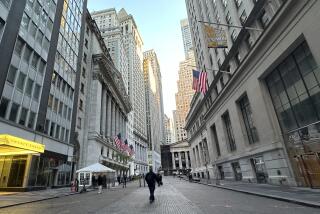Leading Economic Indicators Edge Up
- Share via
NEW YORK — An important gauge of future economic activity rose a modest 0.1% in July, suggesting that higher oil prices and rising interest rates are tempering the nation’s economic growth prospects.
In Washington, meanwhile, the Labor Department said first-time applications for unemployment benefits rose by 6,000 to 316,000 last week but were still at a level that indicated a strong job market.
The figures released Thursday indicated that the U.S. economy was expanding and probably would continue doing so. Still, fears are increasing that higher oil prices -- on top of the Federal Reserve’s interest rate hikes -- could damp consumer spending, a major engine of the economy, as the year progresses.
The New York-based Conference Board’s composite index of leading economic indicators is closely watched because it is designed to predict economic activity over the next three to six months.
It increased 0.1% to 138.3 in July after a revised increase of 1.2% to 138.1 in June. The index was unchanged in May.
The July results were in line with economists’ projections.
Conference Board economist Ken Goldstein said the July figures “suggest moderate growth into the fall.”
The Conference Board’s report said six of the 10 indicators that make up the index contributed to July’s increase. They were claims for unemployment insurance, the interest rate spread, stock prices, building permits, consumer expectations and manufacturers’ orders for non-defense capital goods.
Negative contributors were vendor performance, the money supply and manufacturers’ new orders for consumer goods. Weekly manufacturing hours were unchanged.
The 6,000 increase in initial jobless claims reported by the Labor Department was above the 2,000-person rise that economists had expected.
More to Read
Inside the business of entertainment
The Wide Shot brings you news, analysis and insights on everything from streaming wars to production — and what it all means for the future.
You may occasionally receive promotional content from the Los Angeles Times.










